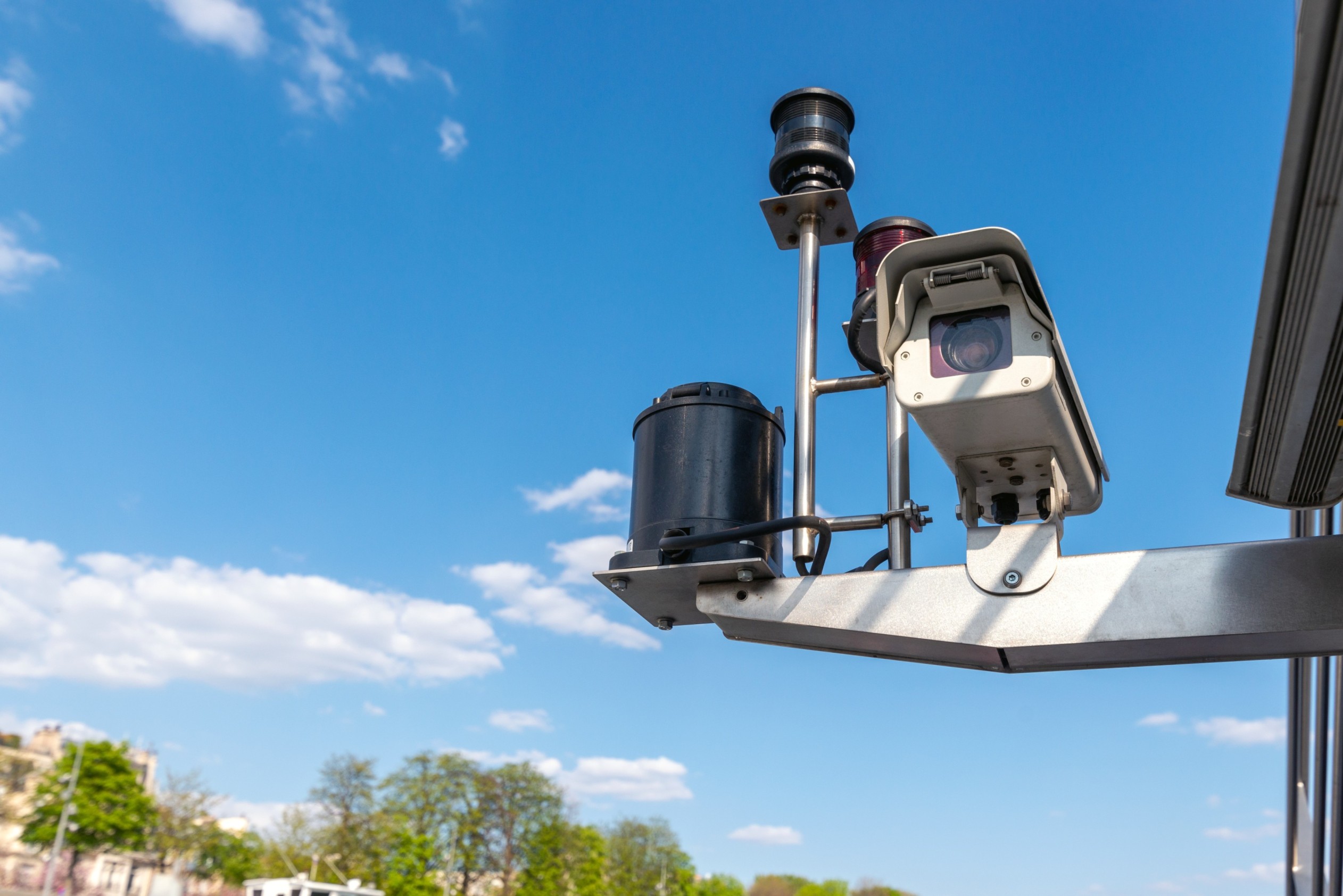Understanding the Legal Use of Police Radar in Kansas City Speed enforcement using radar is…
Radar Setup Procedures Followed by Kansas City Traffic Units

Radar speed enforcement is an important element to provide Kansas City streets with safety. Radar guns are the instruments used by traffic officers to track speeding vehicles rapidly and effectively. Radar readings, though, have to abide by rigorous setup and usage procedures if they are going to hold up in court. All radar devices used by Kansas City traffic units have to go through a thorough process prior to being sent out.
This article explains how Kansas City police use radar equipment, what they do, and why measures are taken to enforce speed with precision.
How Kansas City Traffic Units Calibrate Radar for Deployment
Before sending a radar unit onto duty, officers take some crucial steps to make sure that the unit is accurate. Every Kansas City traffic officer who has undergone the training required to operate radar equipment learns to follow these setup procedures painstakingly.
- Equipment Inspection
The initial step is checking the radar equipment for visible damage. Officers check the antennas, power cable, and control box. If anything seems loose or worn, the radar is not utilized until it has been repaired.
- Power and Connection Setup
Once the device has been tested, officers plug it into power—a battery pack or the patrol car. Antennas are also oriented correctly so that they are in the right direction for accurate readings.
- Warm-Up Period
Radar devices need time to warm up before providing consistent readings. Officers let the device run for several minutes before they test it.
- Calibration Test
A radar unit is calibrated by utilizing tuning forks that simulate individual velocities, normally 35 and 65 mph. The radar must precisely achieve these velocities. If it does not, then it is remanufactured or recalibrated.
- Documentation
Kansas City police officers have written records for every radar test. They record when and under what circumstances the radar was tested. This is important in case a speeding citation later becomes challenged in court.
These first steps guarantee the radar works correctly before officers start gauging true traffic speed.
Placing the Radar with Precision
Radar placement is more than just turning the machine on. Officers must place it in a way that avoids false readings.
- Angle Alignment
The radar beam must hit moving cars at the proper angle—usually less than 20 degrees off-center. If the beam is too broad, the speed reading will be slower than the actual speed.
- Location Selection
Police officers choose open areas where there is a direct view of traffic. Large metal signs, nearby vehicles, or buildings can bounce radar beams and create “ghost” readings.
- Avoiding Multiple Targets
In heavy traffic, radar waves bounce back among several cars. Officers are extremely cautious to place the radar such that they isolate one target at a time.
- Site Testing
Once the radar is set up, officers will test it again with tuning forks to check accuracy in the field.
Accurate placement ensures that each radar reading reflects one car’s true speed, and not interference from surrounding objects.
Radar Operation Procedures in Kansas City
Kansas City police officers have a step-by-step process while actively enforcing to provide consistent outcomes.
- Patrol Setup
Police officers can use radar either while parked (stationary mode) or while driving (moving mode). In either case, officers monitor both the radar screen and the visual cues of the speed of cars approaching them.
- Speed Verification
Radar is used only to confirm an officer’s visual estimate of speeding. An officer must first estimate that a car is speeding before they may use radar.
- Target Vehicle Identification
When there are multiple cars around, the police must find out which one was detected by the radar. They look for visible indicators, i.e., a particular color, model, or lane.
- Lock and Record
After confirming a reading, the officer locks the speed on the radar and makes a record of it, and time, and the location.
- Post-Stop Verification
After an officer has pulled over a driver, the radar may be verified for accuracy using a tuning fork or a self-test facility.
These procedures ensure every radar-checked speeding citation written in Kansas City is based on fair, verifiable proof.
Regular Maintenance and Certification
Kansas City traffic patrol units maintain a strict maintenance routine with their radar equipment. Each unit is checked routinely by certified radar calibration technicians.
- Annual Calibration: Professional calibration of each radar unit at least once a year.
- Shift Testing: Radar units are inspected by officers at the start and end of every shift.
- Log Records: Every test and calibration is recorded in a logbook with date, time, and officer signature.
- Replacement Policy: Devices that failed to calibrate are removed from service immediately.
Records of maintenance can be subpoenaed in court when a driver disputes a speeding ticket. Transparency and accountability are then realized.
Legal Significance of Radar Installation Procedures
How a radar unit is installed can invalidate or validate a speeding ticket’s legitimacy in Kansas City traffic court. A ticket given on the grounds of poorly serviced or abused radar can be dismissed.
Kansas City traffic defense attorneys are likely to check:
- Whether the radar was calibrated before and after use.
- If the officer was certified to use that model.
- If the conditions were favorable to accurate reading.
- Whether test logs had been properly filled out.
By rigidly following setup procedures, Kansas City traffic enforcement units protect public safety and drivers’ rights. Well-serviced and properly used radar ensures equitable enforcement citywide. Contact Speeding Ticket KC and speak with an experienced Kansas City traffic lawyer right away.
Limitations with Radar Setup in the Field
While radar technology is solid, it does face field complications. Officers must be careful to watch for conditions affecting performance:
- Weather: Fog, heavy rain, or snow will distort signals.
- Road Curves: Steep curve situations reduce radar precision by misalignment of beams.
- Vehicle Interference: Trucks and large vehicles tend to reflect waves, which results in erroneous readings.
- Power Interruptions: Patrol car power fluctuations may affect the functioning of the radar.
Kansas City officers are provided with hands-on training to address these problems and keep radar accuracy intact at all times.
The Human Element in Radar Enforcement
Radar equipment is only as effective as the officer who runs it. Kansas City requires all radar operators to undergo special training. They must:
- Pass theory and practical exams.
- Understand the operation of radar.
- Identify interference or false readings.
- Keep accurate records of radar calibration.
This training makes radar enforcement honest, accurate, and legally sound.
Why Accurate Radar Setup is Important to Drivers
To Kansas City drivers, radar installation can be a small detail—but not when it relates to traffic tickets, insurance costs, and driving history. A driver can be wrongly cited for speeding if the radar installation isn’t done correctly.
Drivers who are educated on how radar functions and is installed can be aware of their rights and make informed decisions in the case of contesting a citation.
Final Thoughts
Kansas City police officers utilize radar on a daily basis to apprehend speeding vehicles. But with that ability, there is an obligation. Officers must comply with reasonable procedures to ensure that radar measurements are accurate, legal, and fair.
From equipment inspection to ultimate reporting, each step of radar preparation is motivated by only one purpose—accurate, reliable, and legal speed enforcement.
By maintaining these regulations, Kansas City police strengthen the relationship of trust between law enforcement officers and the public, thereby making streets safer for everyone.
Frequently Asked Questions (FAQs)
1. How often do Kansas City police calibrate radar devices?
Radar devices are calibrated prior to and after each shift, and once a year by certified technicians.
2. What happens if radar installation procedures are not followed?
If procedures for setup are broken, the radar reading can be challenged, and the ticket can be dismissed.
3. Can weather affect radar accuracy during setup?
Yes. Rain, snow, and fog can deflect radar waves, reducing accuracy during speed tests.
4. Who instructs radar operators in Kansas City?
Only trained and certified officers who pass radar operation courses are authorized to operate the equipment.
5. Are radar test logs employed in court?
Yes. Calibration and test logs are used as evidence to prove radar accuracy in court cases.

